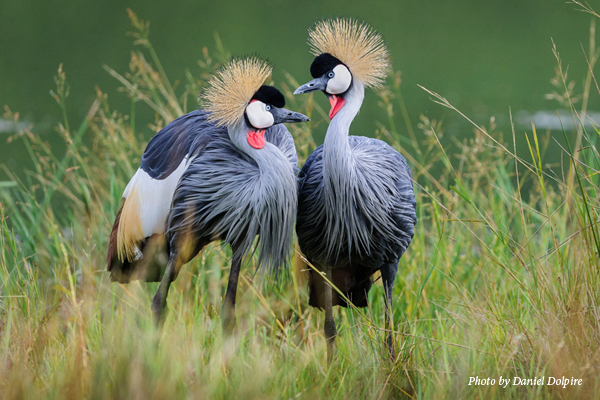
The government of Nandi County is preparing to be among the first counties in Kenya to develop a climate change action plan. Wetlands ecosystems have not been spared the negative impacts of climate change. One such ecosystem is Kingwal wetland, an important breeding and feeding habitat for Grey Crowned Cranes located in Nandi County of Western Kenya. Kingwal wetland is among four project sites of the Kenya Crane and Wetlands Conservation Project. The other project sites are Kipsaina, Sio Siteko, and Lake Ol’ Bolossat.
Prolonged droughts and flooding are among the climate change related impacts adversely impacting Kingwal wetland and survival of Grey Crowned Cranes. At Kingwal, prolonged droughts have resulted in the wetland being used for dry season grazing, contributing to the opening up of the wetland due to the heavy presence of livestock. Besides degradation of the wetland, the livestock, and at times dogs that accompany herders, disturb breeding and feeding cranes. On the other extreme, flooding has resulted in crane nests being washed away.
Developed over a five-month period from February to June 2018, with our local partner Green Belt Movement, the vision of the Nandi County Climate Change Action plan is “A prosperous County that is resilient to climate change, with a low carbon economy contributing to sustainable development of Kenya.” The action plan’s goal is to “Strengthen Nandi County’s adaptive capacity and resilience to climate change, and promote sustainable development as a mitigation strategy for the wellbeing of human and ecological systems”. The action plan has the following strategic objectives:
• Increase food security through sustainable production systems that guarantee ecosystem integrity.
• Mainstream climate change adaptation in the environmental sector for resilient ecological and human systems.
• Enhance water security for climate change resilience.
• Invest in a resilient energy system through an energy generation mix for sustainable development.
• Support the realization of climate resilient infrastructure.
• Promote public awareness, innovation and development of appropriate technologies and capacity to encourage climate resilient development.
• Promote sustainable financing for climate change action through resource mobilization.
• Enhance governance and coordination of climate change adaptation and mitigation.
• Strengthen the adaptive capacity of vulnerable groups – women, orphans and vulnerable children, the elderly and persons with disabilities – through the adoption of a rights-based approach.
The National Adaptation Plan of Kenya 2015-2030 and Climate Change Act of 2016, among others, require County Governments to integrate and mainstream climate change actions, interventions and duties into County Integrated Development Plans, budgeting and implementation structures for realizing equitable sustainable development.
The action plan, which mainstreams the adoption of an ecosystem-based adaptation approach, provides a good starting point for collective stakeholder action to conserve fragile ecosystems such as wetlands and threatened biodiversity, including Grey Crowned Cranes and Sitatunga antelope. The action plan serves as a vehicle for ensuring coordinated delivery of obligations required of Nandi County and its stakeholders, the priority being to build climate resilience in as low carbon manner as possible to ensure Nandi County and the country at large contributes to the goals of the Paris Agreement and the Sustainable Development Goals.
 Story submitted by Rudolf Makhanu, Kenya Country Coordinator for the International Crane Foundation/Endangered Wildlife Trust Partnership. Click here to learn more about our work in Sub-Saharan Africa.
Story submitted by Rudolf Makhanu, Kenya Country Coordinator for the International Crane Foundation/Endangered Wildlife Trust Partnership. Click here to learn more about our work in Sub-Saharan Africa.
